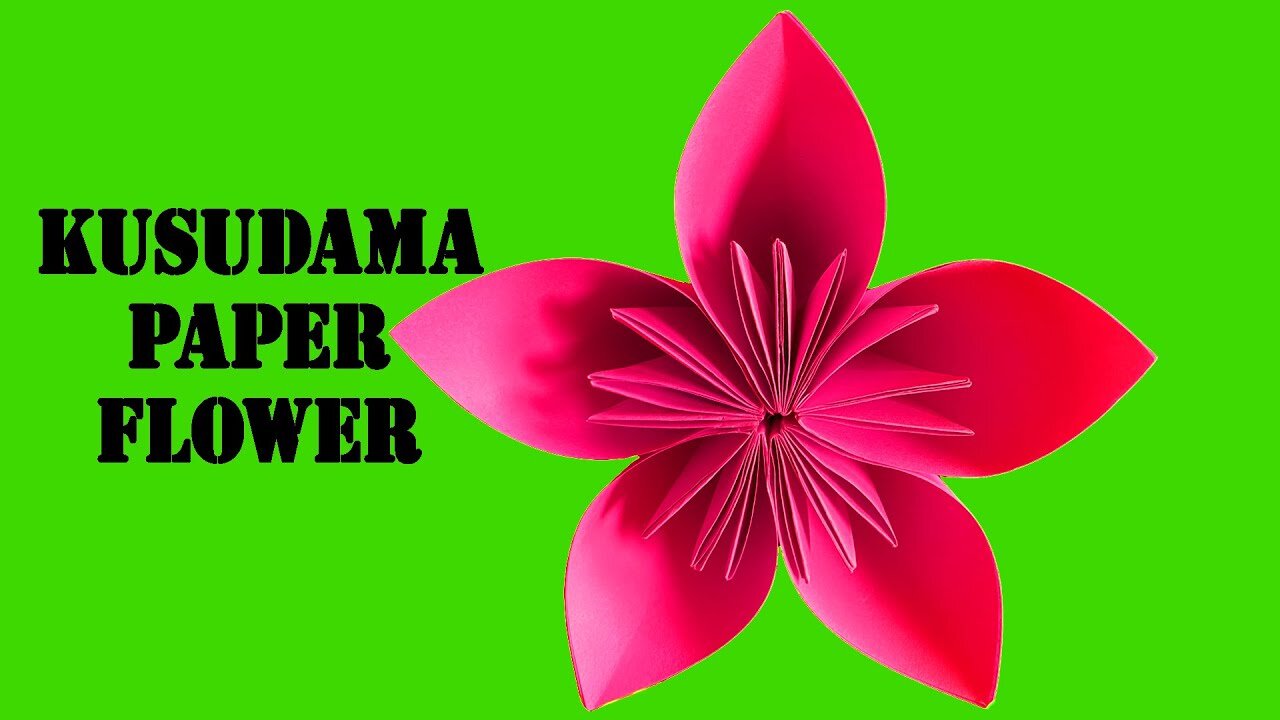Premium Only Content

Kusudama Paper Flowers
The Japanese kusudama is a paper model that is usually (although not always) created by sewing multiple identical pyramidal units (usually stylized flowers folded from square paper) together through their points to form a spherical shape. Alternatively the individual components may be glued together. (e.g. the kusudama in the lower photo is completely glued, not threaded together) Occasionally, a tassel is attached to the bottom for decoration.
Kusudama originate from ancient Japanese culture, where they were used for incense and potpourri; possibly originally being actual bunches of flowers or herbs. The word itself is a combination of two Japanese words kusuri, Medicine, and tama, Ball. They are now typically used as decorations, or as gifts.
The kusudama is important in origami particularly as a precursor to the modular origami genre. It is often confused with modular origami, but is not so because the units are strung or pasted together, instead of folded together as most modular construction are made.
It is, however, still considered origami, although origami purists frown upon using its characteristic technique of threading or gluing the units together, while others recognize that early traditional Japanese origami often used both cutting (see thousand origami cranes or senbazuru) and pasting, and respect kusudama as an ingenious traditional paper folding craft in the origami family.
Modern origami masters such as Tomoko Fuse have created new kusudama designs that are completely assembled without cutting, glue or thread except as a hanger.
-
 9:05:24
9:05:24
MyronGainesX
16 hours ago $25.64 earnedSam Seder Embarrasses Ethan Klein, The Truth On MLK's Murder, Panel Debate w/ Anton Daniels
78.3K18 -
 1:09:38
1:09:38
Man in America
12 hours agoEXPOSED: How Militaries Worldwide Are Engineering DEPOPULATION w/ Todd Callender
67.9K39 -
 8:00:02
8:00:02
SpartakusLIVE
11 hours agoNEW Update, NEW Weapons, NEW META?!? || Quads in VERDANSK
30.5K -
 5:14:28
5:14:28
Jokeuhl Gaming and Chat
8 hours agoEmpyrion - Galactic Survival Long Range Jump Aquired
38.4K1 -
 4:42:30
4:42:30
Right Side Broadcasting Network
1 day agoLIVE REPLAY: President Trump Gives Commencement Address at University of Alabama - 5/1/25
166K21 -
 16:58
16:58
T-SPLY
14 hours agoDems’ Bad News: El Salvador Rejects Abrego, Democrats Fume!
102K65 -
 18:56
18:56
Nick Shirley
10 hours ago $6.79 earnedAsking People About Trump’s First 100 Days… How are Americans Feeling?
41.8K44 -
 4:21:02
4:21:02
NellieBean
8 hours ago🔴 LIVE - COD and Thunder!
19K2 -
 1:46:46
1:46:46
megimu32
9 hours agoON THE SUBJECT: Gaming, Beats & Rumble MUSIC with Lumpypotatox2 🎮🎶
36.3K7 -
 9:50
9:50
Melonie Mac
12 hours agoXbox raised their prices
24.2K33